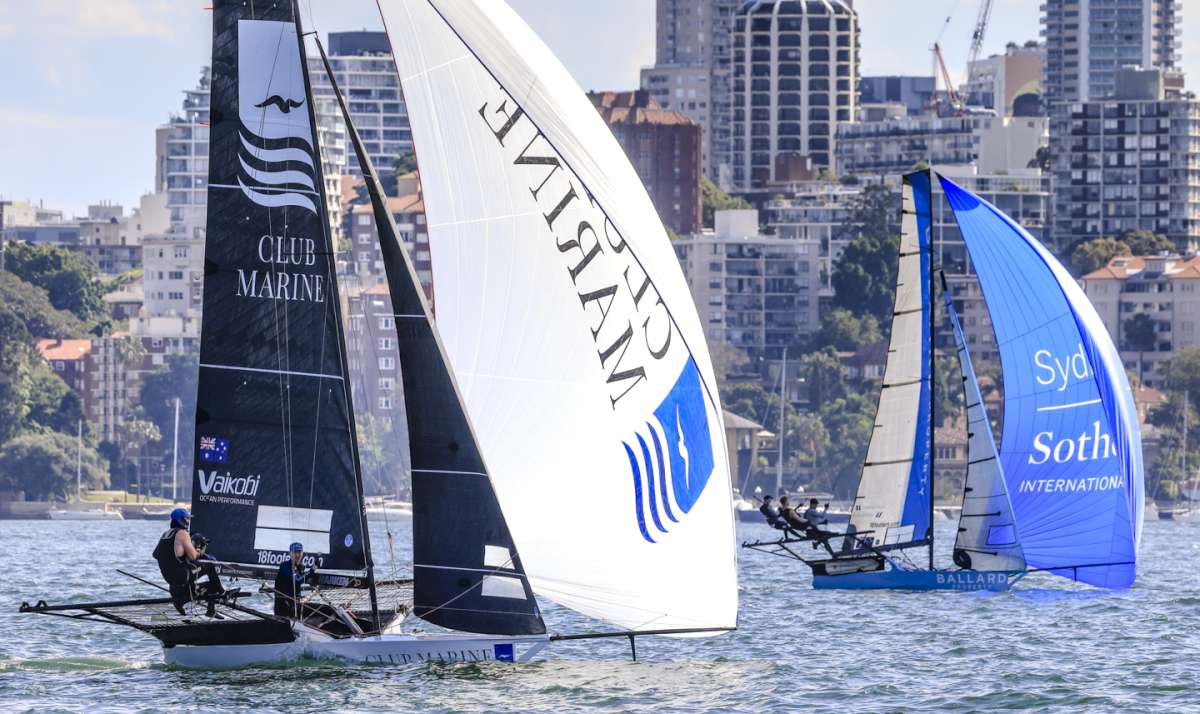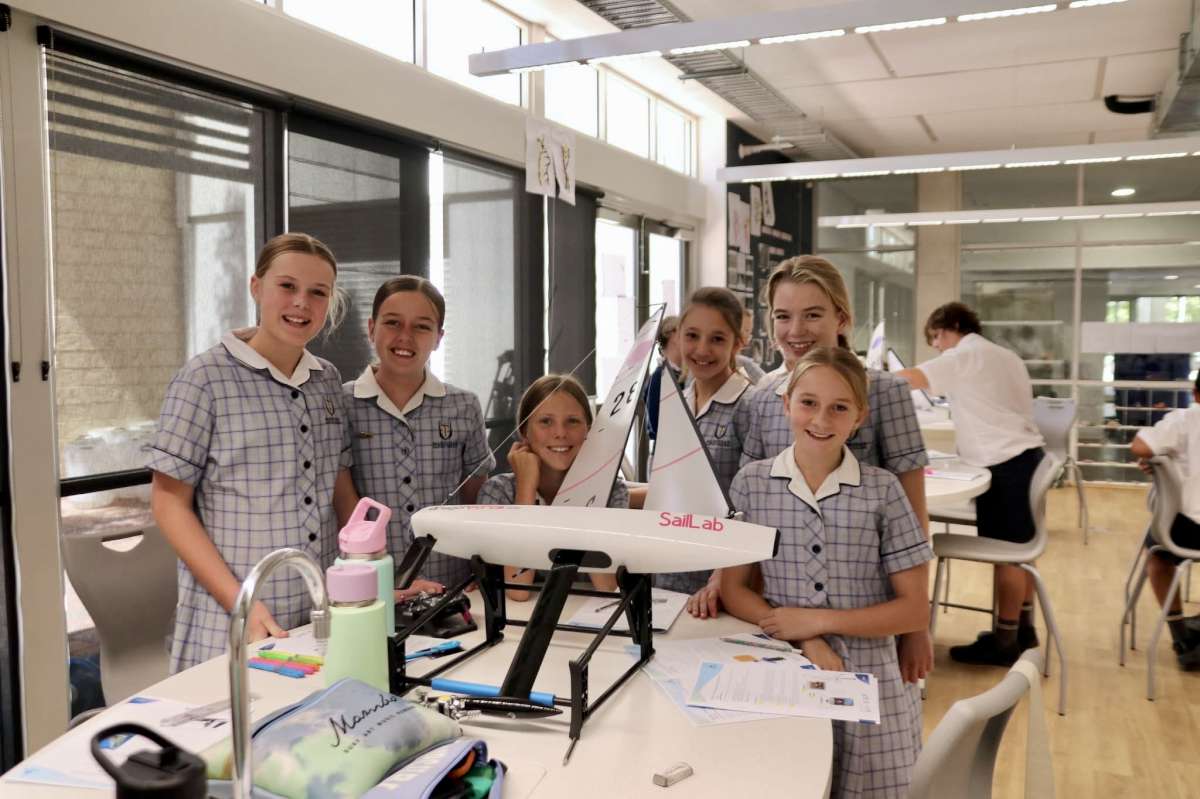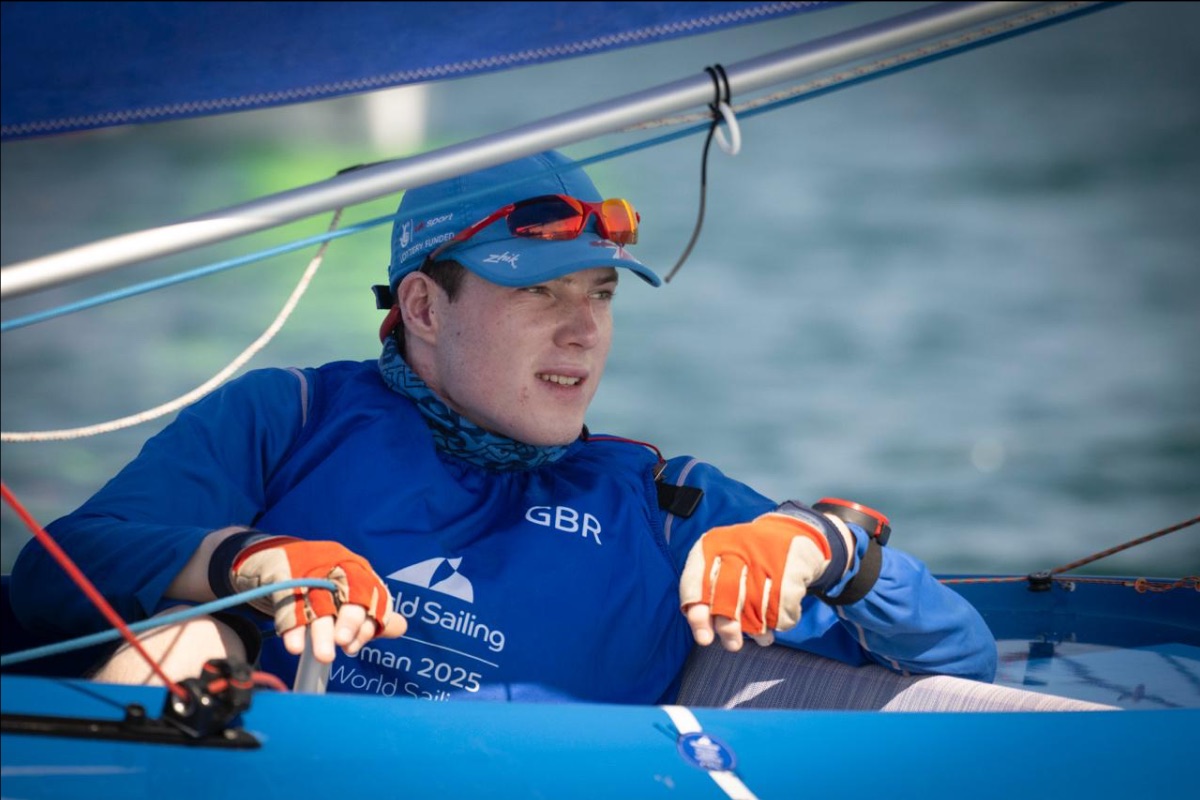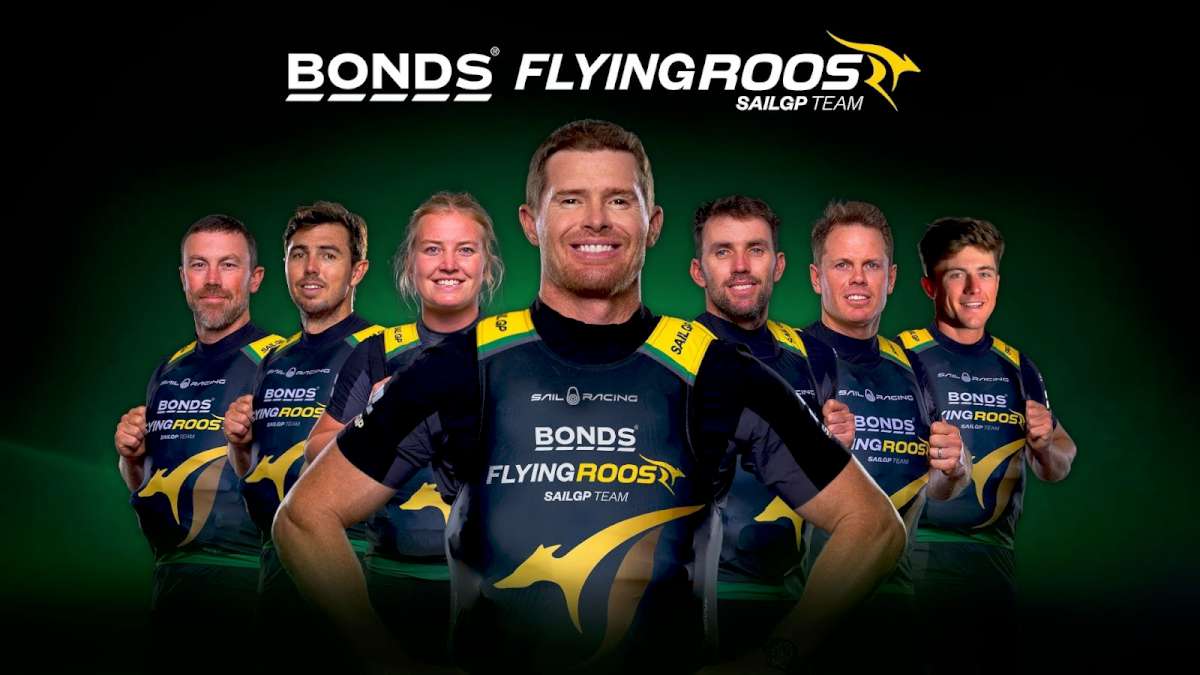Our story will be familiar to many. My husband sailed as a youngster and always dreamed of owning his own boat; he would sail it up the Queensland coast and possibly further afield. However, I had rarely sailed and did not know if I would enjoy it.
This year we made our first extended trip up the Queensland coast.
One advantage that we did have, we had always done a lot of things in the outdoors. This gave us some useful, basic navigation skills but, importantly, it also taught us to never underestimate nature. Some would say that we are overly cautious, but at least we are still here to tell the tale.
When we reached 50+ I suggested to husband Mike if he was going to buy a boat, we had better do so before we were too old to learn to sail it. My main stipulation was, since we lived an hour from the sea, it needed to be ‘parked’ so that we could walk onto it and sail away. Manly, Brisbane became the boat harbour of choice and our boat was found shortly afterwards.
Shifting Tamika, a Cavalier 345, from Mooloolaba where she was located to Manly was our first sail. A friendly pod of whales followed us some of the way causing way too much excitement for an initial trip. Eventually they lost interest and the remainder of the trip was uneventful, although coming in after dark, as the distance took longer than we had planned, proved interesting. Finding our pen at night was not easy as the marina had reallocated us to a berth
we were not at all familiar with.
The next thing I needed to do was to learn to sail! Initially I found this quite hard and at times scary as I realised I was not an intuitive sailor. Slowly I grew in confidence and we participated in SAGS races at Wynnum Manly, graduating to interclub events and Bay races.
Each year we became more competent and, in the last couple of years, we have done the Wynnum Manly short-handed series which was very good preparation for our two up adventure. I have been a bit of a slow learner and still get flustered under pressure in a race but discovered that when the chips were really down: on the helm in 20 knots with the kite up and the steering cable broke for example, I remained eerily calm and clear-headed.
Being part of a delivery team returning a yacht from Hobart to Brisbane also helped me to gain confidence offshore and in different seas and winds to what is commonly experienced in the more protected waters of Moreton Bay.
I had always said that when Mike turned 60 we would sail out of the Manly Boat Harbour leads and turn left. When that birthday happened this year, seven and a half years after we bought Tamika, we were ready to head north.
The late cyclone season meant we did not leave until the end of May and we had only seven weeks as I had to return to work. This was a trial trip to see how we went.
The actual weekend of departure was fraught with problems and I was beginning to wonder if we would set sail at all. Despite Mike working nearly full time on boat preparation for four weeks before departure, at lunchtime on Sunday I was literally lying across the motor priming the fuel lift pump as we attempted to bleed the diesel.
Eventually, we had some success but it was so late that we decided to stay the night at Green Island, just outside the Manly leads. At least we were underway.
Monday proved a great day for sailing, with a spinnaker run across the bay before heading up Bribie Island with the tide. When we tied up at the marina at Mooloolaba for the night we discovered we knew the boat alongside us and the owner was also heading north.
From this point we met up at different places until he continued and we had to return home. This is a very common aspect of sailing that I had read about, but not previously experienced.
The decision had been made to head north as quickly as possible so that we could take our time coming back. Our goal was to reach the Keppel Group or, perhaps, Island Head Creek.
We were aware that the prevailing winds would take us north quickly, but coming back might be an issue. On this schedule, we left Mooloolaba the next afternoon at 1630 for a night sail to the Wide Bay Bar, which we hoped to cross on high tide the next morning.
With no visible moon and the Milky Way resplendent behind us, helming and holding a course was a little difficult and required concentration. Despite this, sailing at night with a good wind was a peaceful experience, which we found most enjoyable. We managed two hours sleep in behind Double Island Point and both of us dozed when we were not helming.
Waking at 4am, we headed off to the Wide Bay Bar only to find that the GPS on our chartplotter was not working. It was pitch black so we had no idea where we were going except by compass and it looked like we would have to return to where we had anchored till daylight.
Just as we were about to give up, a reboot of the electronics finally worked and we headed off for an uneventful bar crossing.
Our friend who had travelled with us most of the night was not so lucky. It turned out he picked up some remnants of a fishing net on his feathering prop and, as a consequence, he could not use reverse until he cleared it the next day.
From Inskip Point we worked our way up the Sandy Straits to Moon Point, a most enjoyable and fast sail. Reaching over nine knots at times across Hervey Bay had us quickly at Burnett Heads, where we stayed for a couple of days as the wind died completely.
While a great place to stay, because of the very friendly people, the persistent midges and mossies proved a problem and caused me grief for the next week. I learnt to take a much more aggressive approach to insects and now travel with tropical strength spray (40% DEET), mossie coils, vitamin B1, anti-histamines, nets on the hatches and long sleeves and long pants. While not entirely successful, I kept the worst of the bites away.
From Bundaberg we sailed to Pancake Creek and then to Gladstone, where we sheltered from some strong winds for a few days. We were able to catch up with a friend, enjoy the facilities at the marina, including a courtesy bus and gain
a wealth of information from the local volunteer marine rescue.
Anxious to keep going, we were soon on our way again choosing to go through the north passage between Curtis and Facing Islands. This proved an excellent exit point from Gladstone, although it is tide dependent.
We found ourselves at Cape Capricorn at 1030, a time we judged to be way too early to stop sailing. We had managed seven knots with two reefs in the main. We were flying along in strong following breezes and relatively flat seas so Great Keppel became our destination and home for the next few days.
In an earlier life we had lived opposite Great Keppel Island on a private headland for over two years. As caretakers only, unfortunately. In those days we had rarely been to Keppel as it was in its ‘get wrecked’ stage and we now appreciate what we missed.
While the anchorage at Svendsen’s beach was a bit ‘rolly’ in the persistent south-easterly swell if you did not tuck in close, Great Keppel Island is beautiful with bush tracks that are worth visiting. We were particularly interested in Rory’s track, named after a young soldier who loved Keppel but was unfortunately killed in Afghanistan: a fitting memorial to this soldier.
While at Keppel we decided that we would not try to go further north as the constant 15 knot to 20 knot winds from the southeast would make it hard work to return. Instead, we decided it would be wise to start our trip back and take our time to see a few more things along the way.
Initially we moved south much faster than we expected as our intended anchorages at Hummocky Island and Cape Capricorn were made untenable by unexpectedly strong westerly winds. Appreciating the need to be flexible, we pushed further south and soon found ourselves spending a few days in Pancake Creek, enjoying the walk to the Bustard Head lighthouse and the tour by the volunteer lighthouse keepers.
Fishing was also productive but the anchorage became quite busy as many people were heading north. After a few days there, we moved south to Burnett Heads then on to Hervey Bay, stopping in at the Urangan Marina for a few days.
Moving on from there we found ourselves at Gary’s Anchorage for an extended stay, waiting for the south-easterlies to abate. With 46 knots recorded at Double Island Point, we were going nowhere.
The Wide Bay Bar finally settled and we were on the final leg of the trip home. A perfect day sailing with the whales on the way to Mooloolaba, then back to Manly.
As it turned out we had plenty of time to sail home and plenty of time to appreciate the sights on the way. The slow pace on the way back also let us really find our feet as cruisers.
So what did we learn?
1Our old girl, 1989 model, is a very comfortable boat for two people. A 35 footer seems about right for us. Tamika behaved well and it was easy for us to sail her in all conditions. The designer, Laurie Davidson, no doubt had a big hand in that.
2Our eutectic fridge is not very modern and much maligned these days it seems, but we found its performance fantastic. At anchor we ran the motor for 15 minutes each day and everything kept very cold, only one frozen beer! We did not miss a freezer as we had our meat in cryovac packs, something we will do again.
3We enjoyed the journey as much as the destination. In other words, we love the sailing but the conditions had to be right. It is worth hanging around to get good sailing conditions. Our trip south against the ever present sou’easterlies was very stop/start, but we found the early morning land breezes and the occasional westerly wind after a change gave us good mileages in a day.
4Boat maintenance is consistent work. There is no point complaining; it just has to be done.
5Good books are essential. I should also have downloaded the podcasts and movies as I had planned, they would have been very useful.
6Having a few items to cook with: flour, butter, milk, eggs sugar, adds variety to the food and provides a pleasant way to spend down time.
7Time and effort spent upgrading the electrics of the boat, installing some small flexible solar panels and a good quality battery monitor were well worth the effort. With LED lights throughout and careful use of the television, we had no trouble staying charged at anchor for a week. The addition of AIS with the new electronics made life much safer in crowded shipping channels like Gladstone.
8Adding an external antenna and a dedicated wifi hotspot to your boat is a great idea. Our download speeds were often faster than at home. It seems that Facebook, news apps and similar applications are fast replacing the radio as a way to keep in touch and up to date.
9We replaced the original upholstery before we left. We chose to have a layer of memory foam over the other foam on our bed. Add a woollen underlay and we slept like babies. It was definitely worth the investment.
10It was a good idea to go north quickly so that we did not panic about time on the way back.
11The weather apps on your phone are your friend and remarkably accurate. We generally used MetEye and Marine Wind Forecast, both from BoM. That said, you still need to look outside. Although trends in forecasts may be right, the timing often varies by a few hours. Be patient and wait for good weather and fair seas.
12Learning to relax takes time after leaving a busy work life behind. Again, patience is needed.
Finally, stop finding excuses and get going.
Next year we plan to leave a little later so that the south easterlies might be lighter.
After that, who knows…? ≈
























